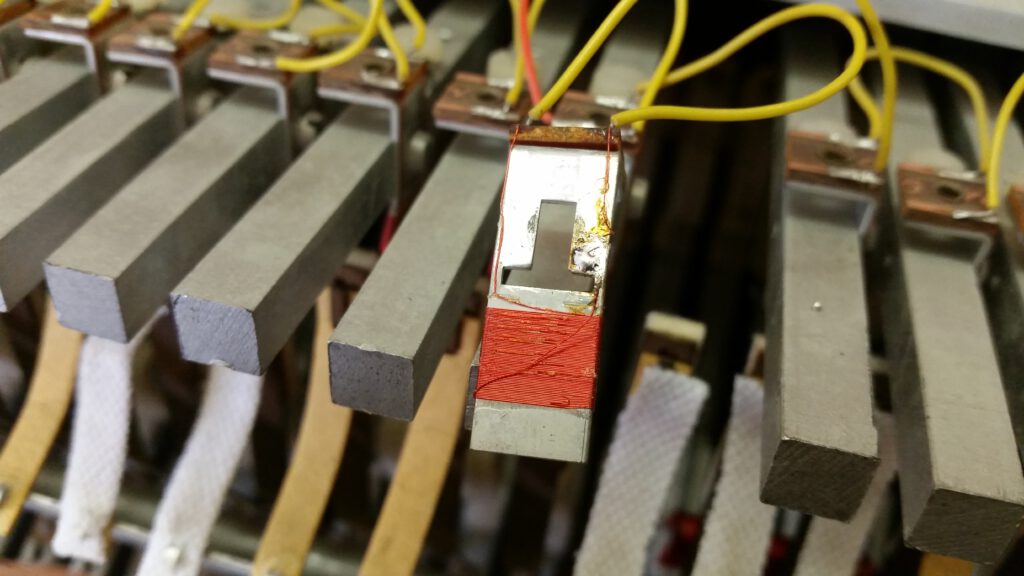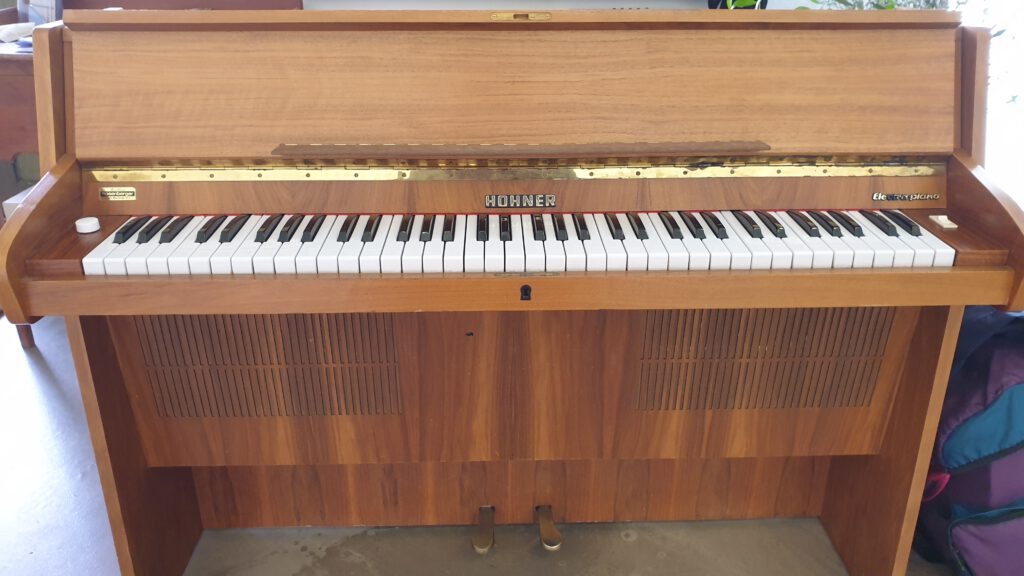Introduction: a first impression
It’s been about 53 years since it got released. The first time I encountered one I was fascinated as well as disappointed. The Hohner Piano Electra stood there, in the recording room of a producer, here in Berlin. I got the call that a good colleague of mine needed some help with the instrument. He had tuned it for the producer but unfortunately damaged one of the pick ups.

There it was. I stood before it. It looks just like a piano from the 60s: typically small in height and with that ubiquitous veneer that surely had warmer tones in its days of glory. I guess the nitrocellulose lacquer does not stand the test of time as well as a shellac finish. We switched it on and I played a few chords on it. The Piano Electra delivered these wonderful round soft tones with a bitey amp if you pushed the dynamics. Nice!
When I opened the case, my fascination kicked in for real this time. Seeing the system of how it worked, the tines (or better said, the tongues), the resonators, the damping system, the hammers…. I immediately felt the urge to dissect it; learn everything about it and put it back together… I was at a client’s. Shit! – Disappointment.
In the following posts I want to take you with me to that first time seeing the Piano Electra. There is not enough information about this instrument online, and that is a pity. And when I say information, I mean technical information. Of course it is great to hear how one person believes it to be the best electro-mechanical instrument out there, or how you can find historical information…. the information that’s lacking is the information on how does it work, what does it look like inside, what could be improved, what does the REAL Hohner Electra Piano electronic schematic look like, etc. This is what I intend to do.


